Power Control and Fault Ride-Through Capability Analysis of Cascaded Star-Connected SVG under Asymmetrical Voltage Conditions
Abstract
:1. Introduction
2. System Configuration
3. Power Balance Control under Asymmetrical Voltage Conditions
3.1. Zero-Sequence Voltage Derivation
3.2. Negative-Sequence Current References
3.3. Zero-Sequence Voltage Feed-Forward Reference
3.4. Control Strategy for a Star-Connected SVG
4. Fault Ride-Through Capability of a Star-Connected SVG
4.1. Comparison in Maximum Phase Voltage
4.2. Comparison of the Maximum Phase Current
5. Simulation and Experiment Results
6. Conclusions
Author Contributions
Funding
Conflicts of Interest
References
- Kouro, S.; Leon, J.I.; Vinnikov, D.; Franquelo, L.G. Grid-connected photovoltaic systems: An overview of recent research and emerging PV converter technology. IEEE Ind. Electron. Mag. 2015, 9, 47–61. [Google Scholar] [CrossRef]
- Blaabjerg, F.; Teodorescu, R.; Liserre, M.; Timbus, A.V. Overview of control and grid synchronization for distributed power generation systems. IEEE Trans. Ind. Electron. 2006, 53, 1398–1409. [Google Scholar] [CrossRef]
- Fuentes, C.D.; Rojas, C.A.; Renaudineau, H.; Kouro, S.; Perez, M.A.; Thierry, M. Experimental validation of a single dc bus cascaded H-bridge multilevel inverter for multistring photovoltaic systems. IEEE Trans. Ind. Electron. 2016, 64, 930–934. [Google Scholar] [CrossRef]
- Milczarek, A.; Malinowski, M.; Guerrero, J.M. Reactive power management in islanded microgrid—Proportional power sharing in hierarchical droop control. IEEE Trans. Smart Grid 2015, 6, 1631–1638. [Google Scholar] [CrossRef]
- Muñoz, J.A.; Espinoza, J.R.; Baier, C.R.; Morán, L.A.; Guzmán, J.I.; Cárdenas, V.M. Decoupled and Modular Harmonic Compensation for Multilevel STATCOMs. IEEE Ind. Electron. Mag. 2014, 61, 2743–2753. [Google Scholar] [CrossRef]
- Lee, T.; Hu, S.; Chan, Y. D-STATCOM with positive-sequence admittance and negative-sequence conductance to mitigate voltage fluctuations in high-level penetration of distributed-generation systems. IEEE Ind. Electron. Mag. 2013, 60, 1417–1428. [Google Scholar] [CrossRef]
- Camacho, A.; Castilla, M.; Miret, J.; Borrell, A.; de Vicuña, L.G. Active and reactive power strategies with peak current limitation for distributed generation inverters during unbalanced grid faults. IEEE Ind. Electron. Mag. 2015, 62, 1515–1525. [Google Scholar] [CrossRef]
- Sivaranjani, R. StatCom control at wind farms with fixed-speed induction generators under asymmetrical grid faults. In Proceedings of the 2016 International Conference on Electrical, Electronics, and Optimization Techniques (ICEEOT), Chennai, India, 3–5 March 2016; pp. 3442–3447. [Google Scholar] [CrossRef]
- Akagi, H.; Inoue, S.; Yoshii, T. Control and performance of a transformerless cascade PWM STATCOM with star configuration. IEEE Trans. Ind. Appl. 2007, 43, 1041–1049. [Google Scholar] [CrossRef]
- Peng, F.Z.; Lai, J. Dynamic performance and control of a static VAr generator using cascade multilevel inverters. IEEE Trans. Ind. Appl. 1997, 33, 748–755. [Google Scholar] [CrossRef]
- Hatano, N.; Ise, T. Control scheme of cascaded H-Bridge STATCOM using zero-sequence voltage and negative-sequence current. IEEE Trans. Power. Deliv. 2010, 25, 543–550. [Google Scholar] [CrossRef]
- Zhixing, H.; Fujun, M.; An, L.; Qianming, X.; Yandong, C.; Huagen, X.; Guobin, J. Circulating current derivation and comprehensive compensation of cascaded STATCOM under asymmetrical voltage conditions. IET Gener. Transm. Distrib. 2016, 10, 2924–2932. [Google Scholar] [CrossRef]
- Chen, H.; Wu, P.; Lee, C.; Wang, C.; Yang, C.; Cheng, P. Zero-sequence voltage injection for dc capacitor voltage balancing control of the star-connected cascaded H-Bridge PWM converter under unbalanced grid. IEEE Trans. Ind. Appl. 2015, 51, 4584–4594. [Google Scholar] [CrossRef]
- Akagi, H. Multilevel converters: Fundamental circuits and systems. Proc. IEEE 2017, 105, 2048–2065. [Google Scholar] [CrossRef]
- Gultekin, B.; Ermis, M. Cascaded multilevel converter-based transmission STATCOM: System design methodology and development of a 12 kV ± 12 Mvar power stage. IEEE Ind. Electron. Mag. 2013, 28, 4930–4950. [Google Scholar] [CrossRef]
- Akagi, H. Classification, terminology, and application of the modular multilevel cascade converter (MMCC). IEEE Trans. Power Electron. 2011, 26, 3119–3130. [Google Scholar] [CrossRef]
- Shi, Y.; Liu, B.; Shi, Y.; Duan, S. Individual phase current control based on optimal zero-sequence current separation for a star-connected cascade STATCOM under unbalanced conditions. IEEE Ind. Electron. Mag. 2016, 31, 2099–2110. [Google Scholar] [CrossRef]
- Betz, R.E.; Summers, T.; Furney, T. Symmetry compensation using a H-bridge multilevel STATCOM with zero sequence injection. In Proceedings of the Conference Record of the 2006 IEEE Industry Applications Conference Forty-First IAS Annual Meeting, Tampa, FL, USA, 8–12 October 2006; Volume 4, pp. 1724–1731. [Google Scholar]
- Song, Q.; Liu, W. Control of a cascade STATCOM with star configuration under unbalanced conditions. IEEE Trans. Power Electron. 2009, 24, 45–58. [Google Scholar] [CrossRef]
- Ota, J.I.Y.; Shibano, Y.; Niimura, N.; Akagi, H. A phase-shifted-PWM D-STATCOM using a modular multilevel cascade converter (SSBC)—Part I: Modeling, analysis, and design of current control. IEEE Trans. Ind. Appl 2015, 51, 279–288. [Google Scholar] [CrossRef]
- Behrouzian, E.; Bongiorno, M. Investigation of negative-sequence injection capability of cascaded H-bridge converters in star and delta configuration. IEEE Trans. Power Electron. 2017, 32, 1675–1683. [Google Scholar] [CrossRef]
- Lu, D.; Wang, J.; Yao, J.; Wang, S.; Zhu, J.; Hu, H.; Zhang, L. Clustered voltage balancing mechanism and its control strategy for star-connected cascaded H-Bridge STATCOM. IEEE Trans. Ind. Electron. 2017, 64, 7623–7633. [Google Scholar] [CrossRef]
- Hatano, N.; Ise, T. A configuration and control method of cascade H-bridge STATCOM. In Proceedings of the IEEE Power Energy Society General Meeting, Pittsburgh, PA, USA, 20 July 2008. [Google Scholar] [CrossRef]
- Lee, C.T.; Wang, B.S.; Chen, S.W.; Chou, S.F.; Huang, J.L.; Cheng, P.T.; Akagi, H.; Barbosa, P. Average power balancing control of a STATCOM based on the cascaded H-bridge PWM converter with star configuration. In Proceedings of the 2013 IEEE Energy Conversion Congress and Exposition, Denver, CO, USA, 15–19 September 2013; pp. 970–977. [Google Scholar] [CrossRef]
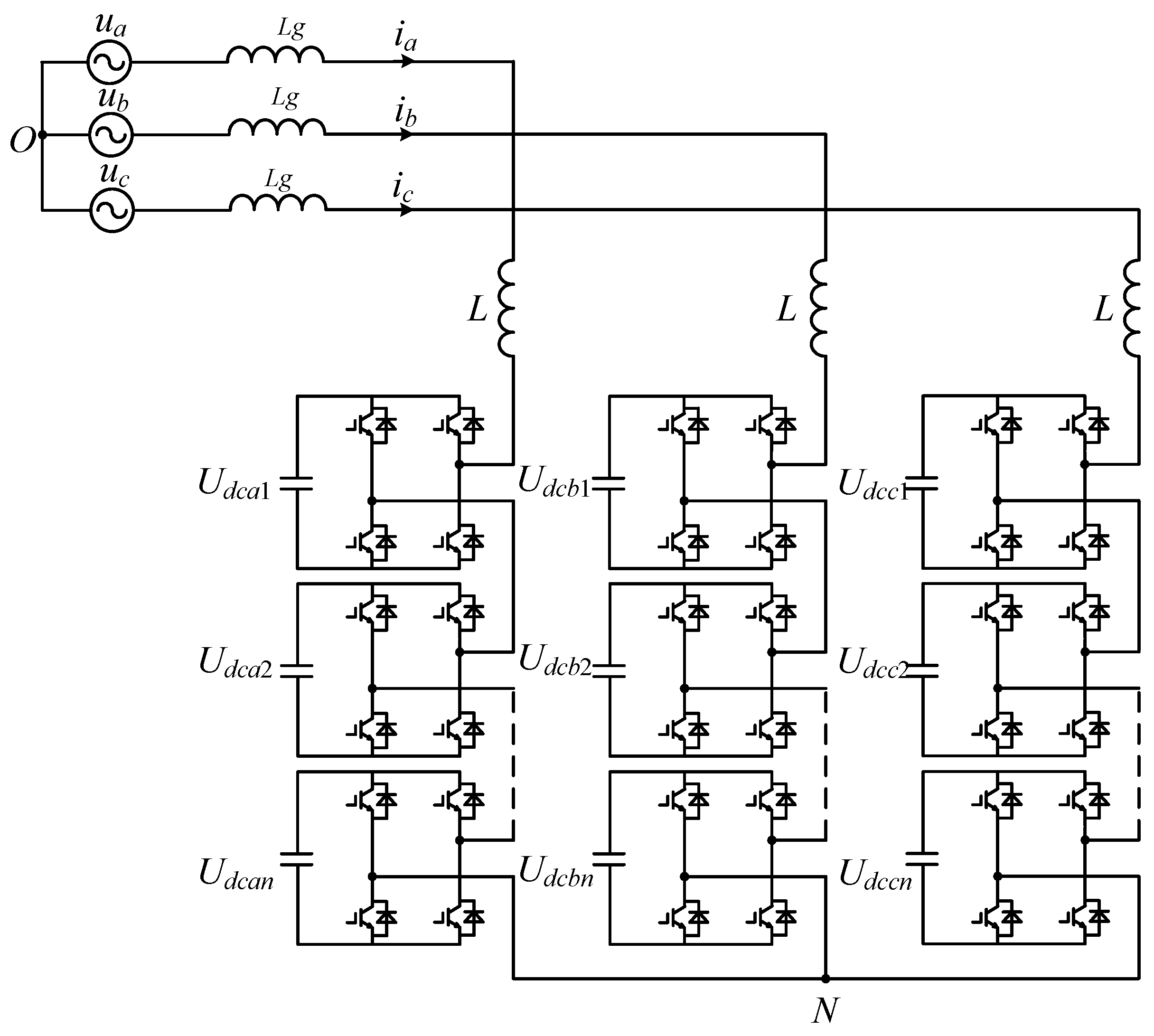
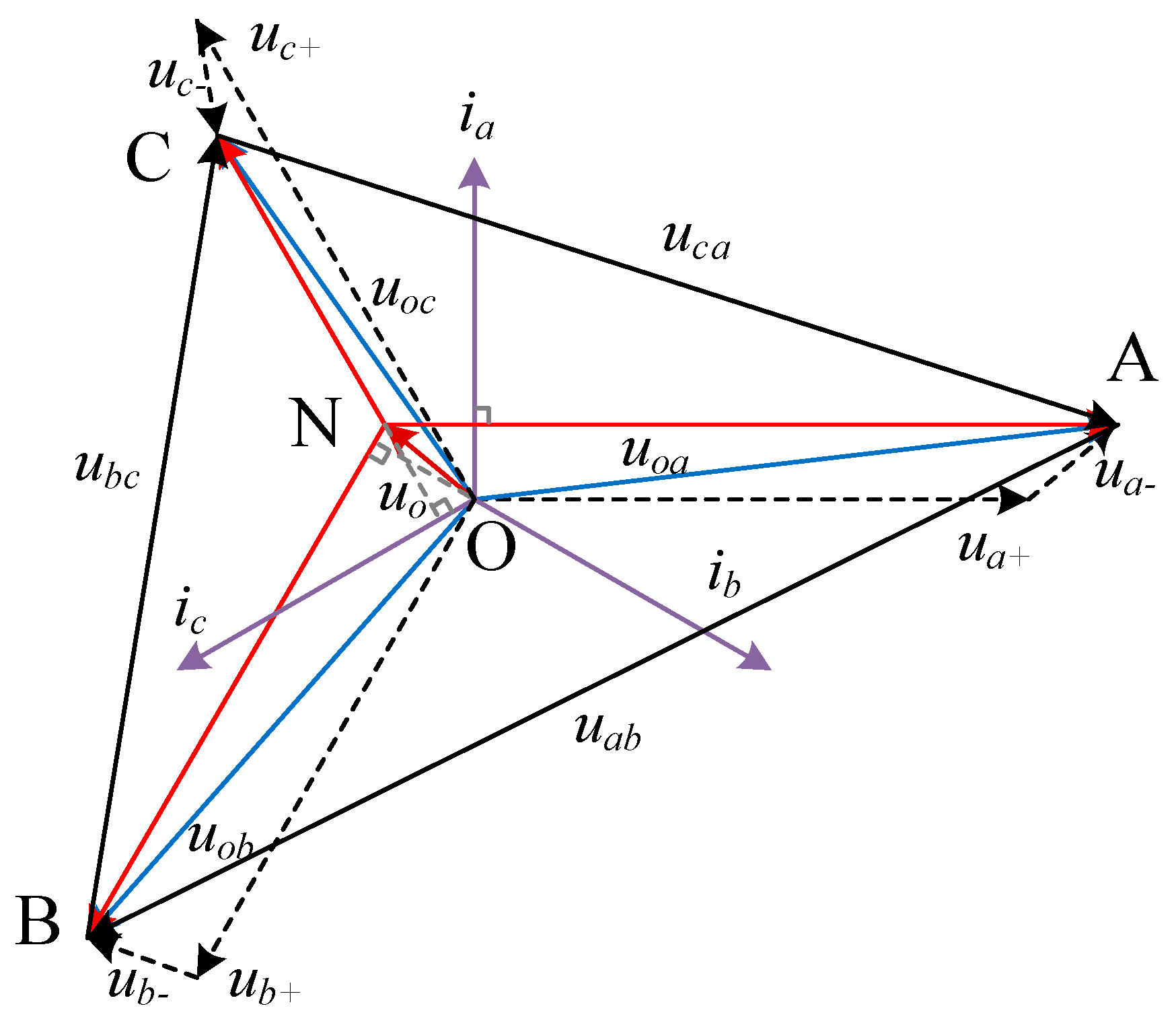
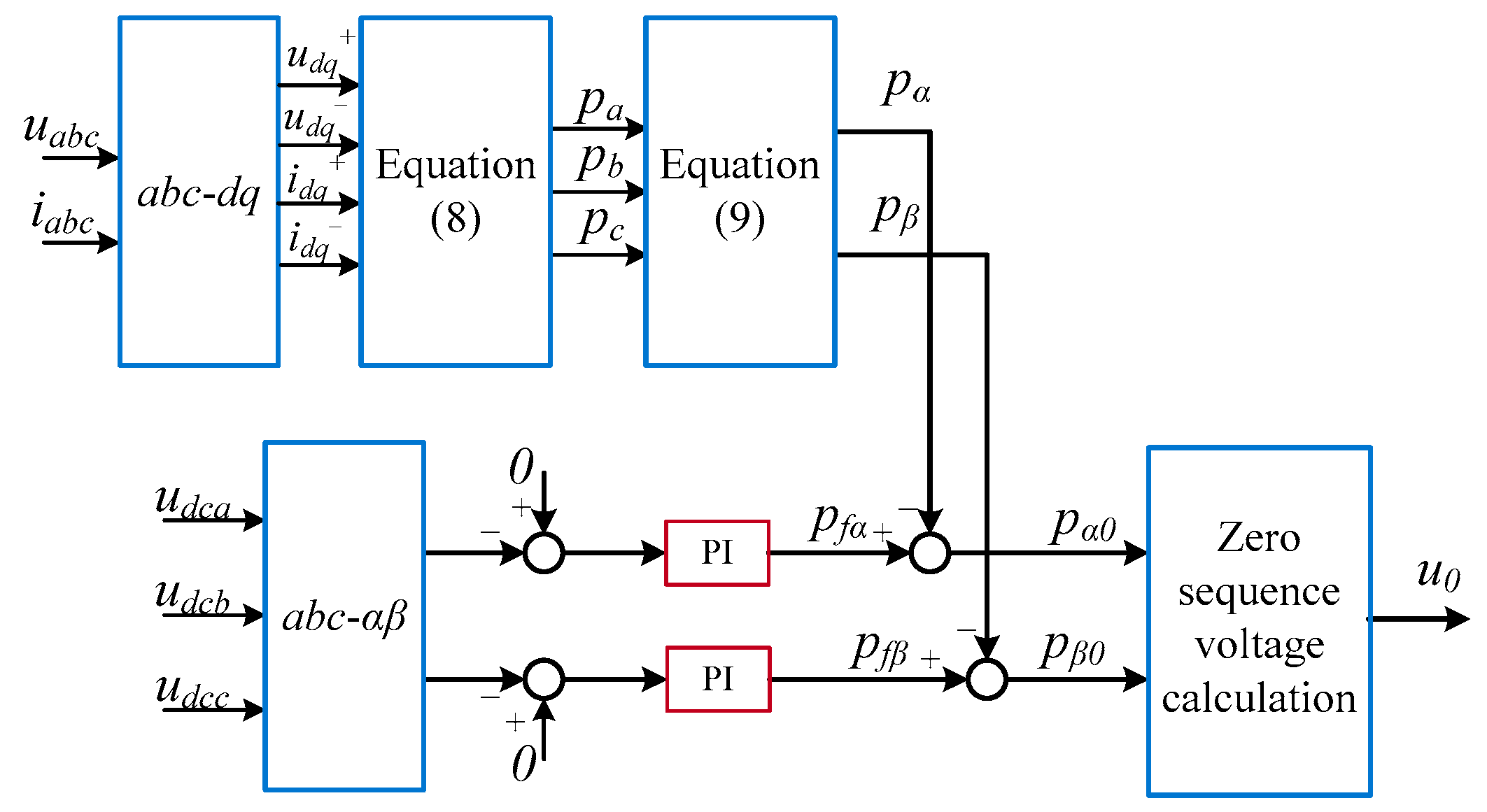
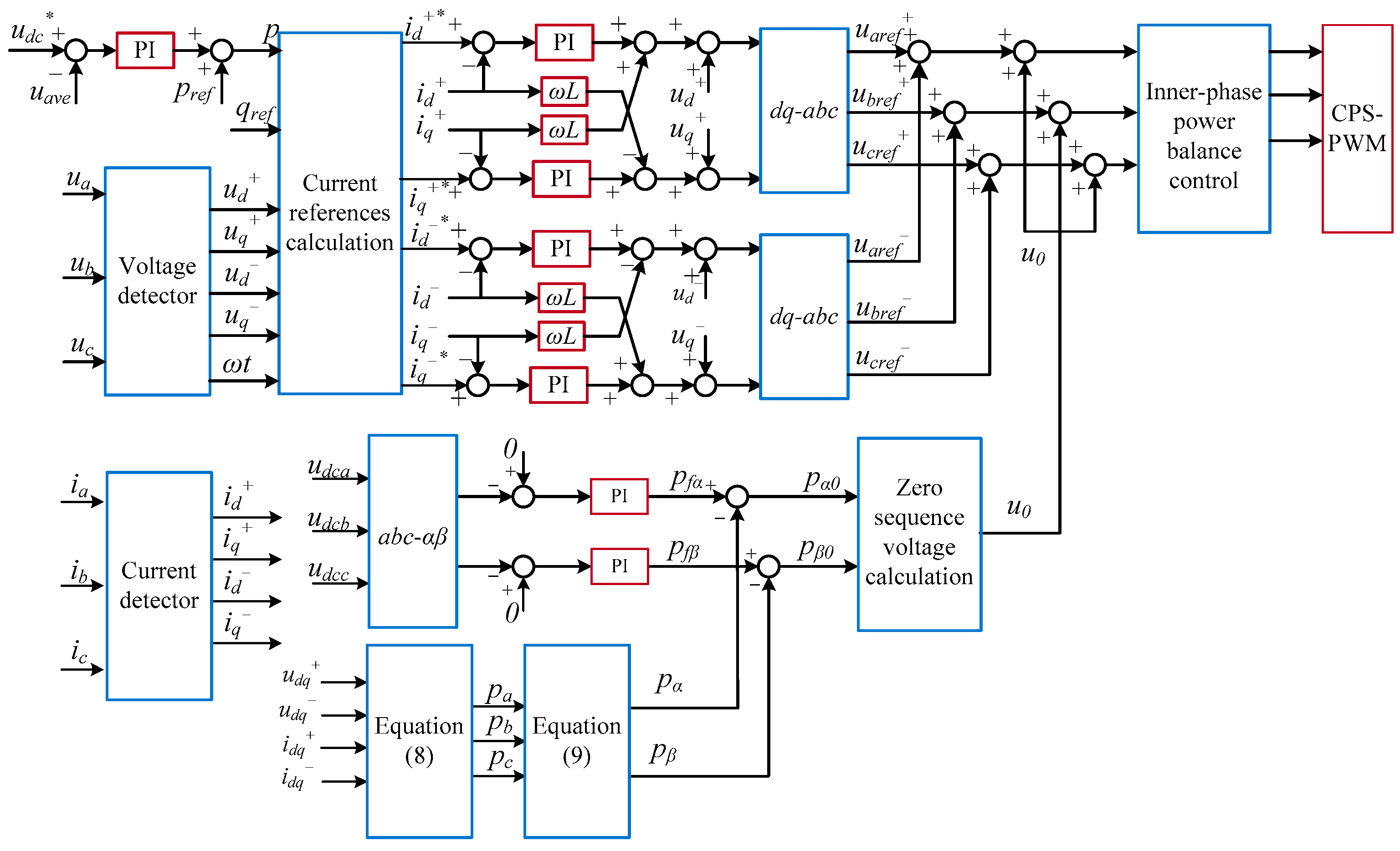
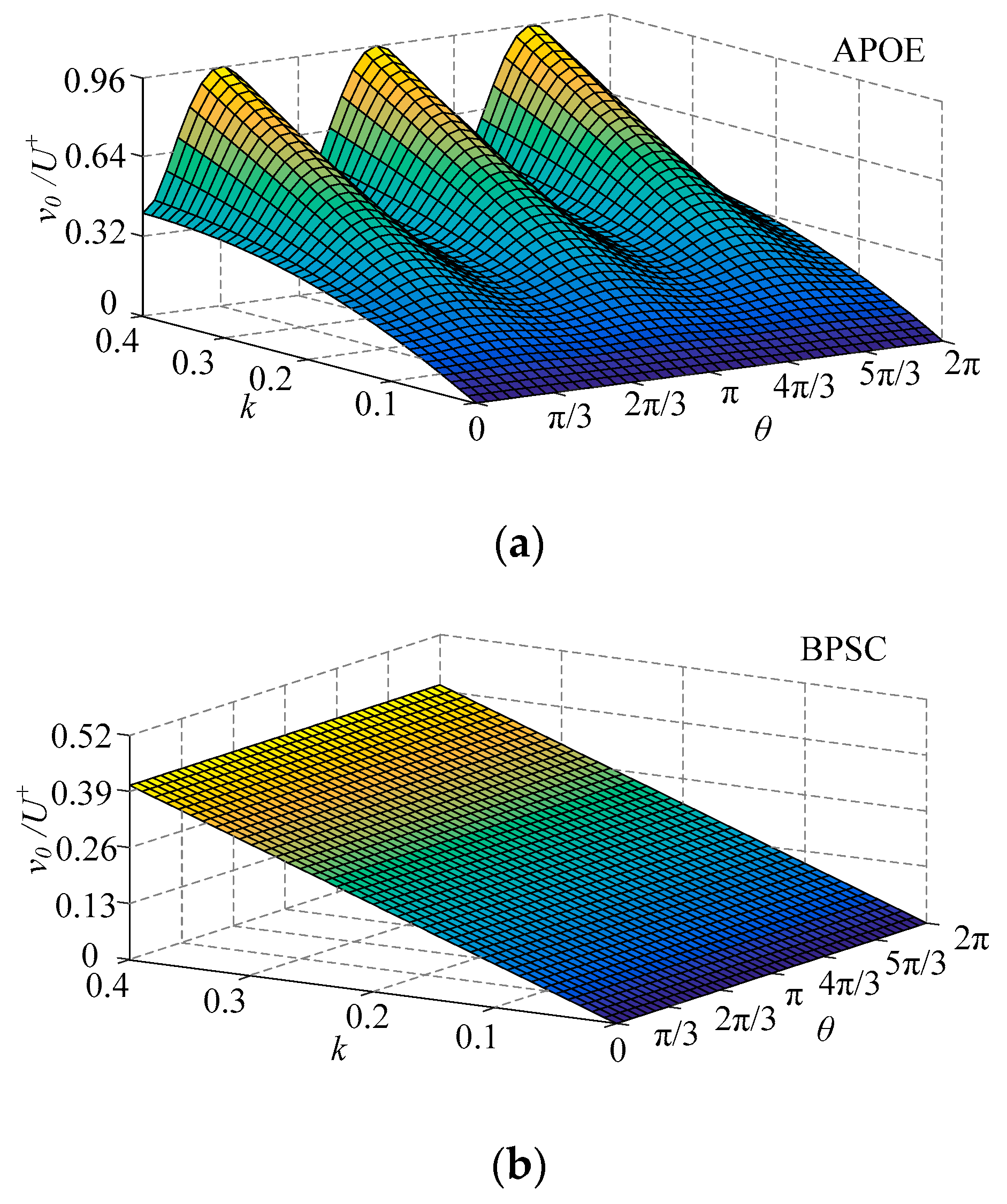
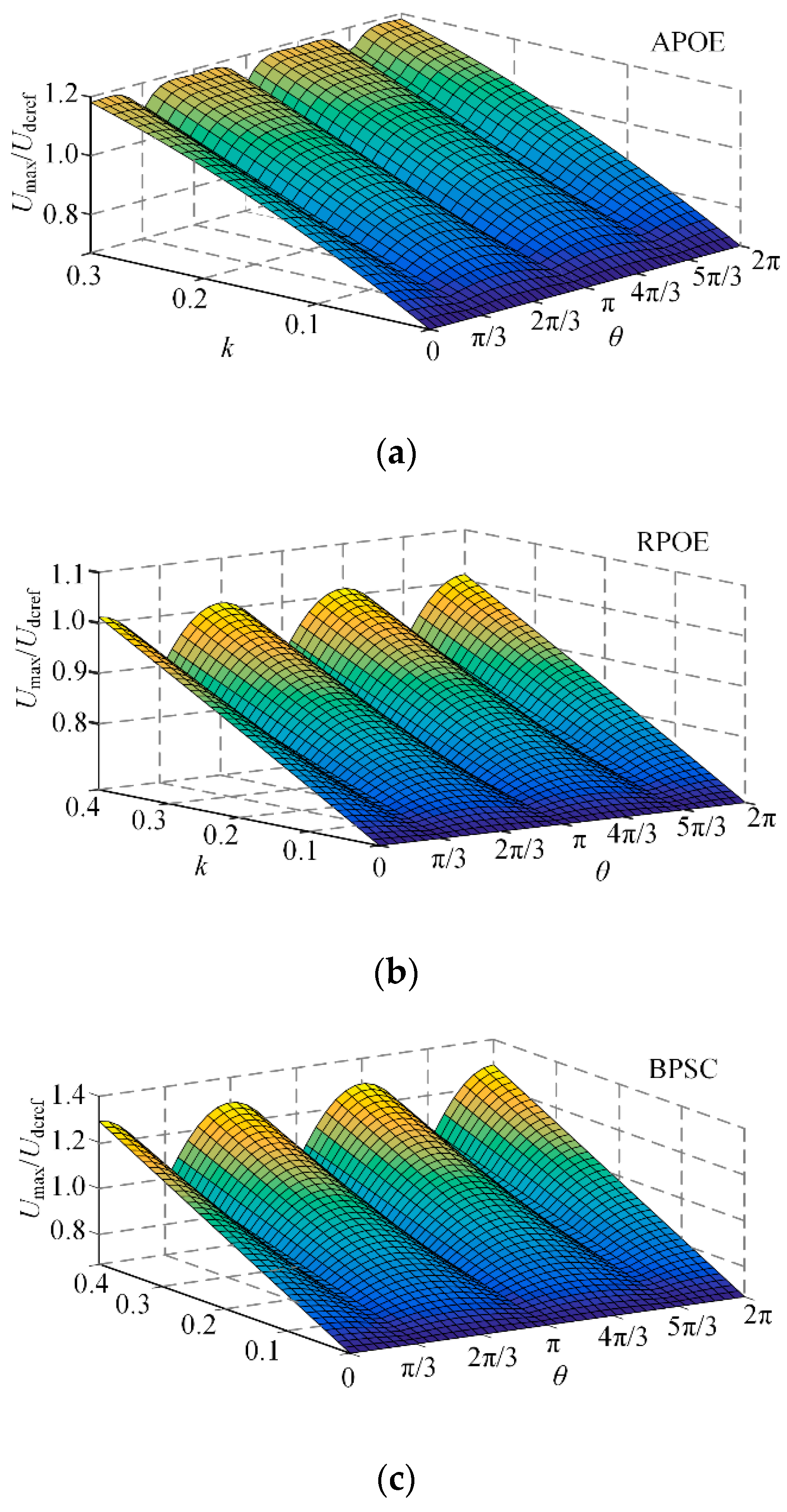
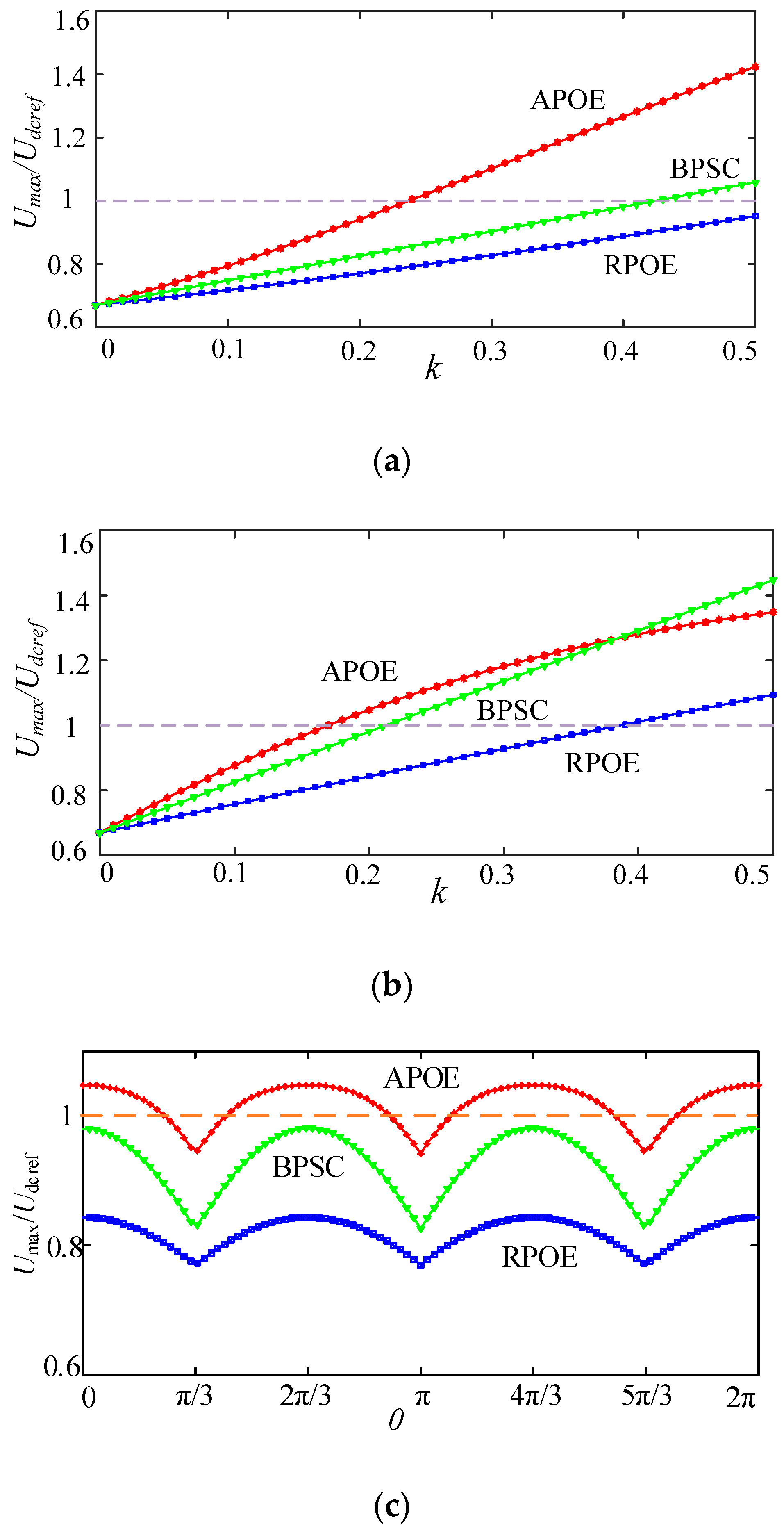
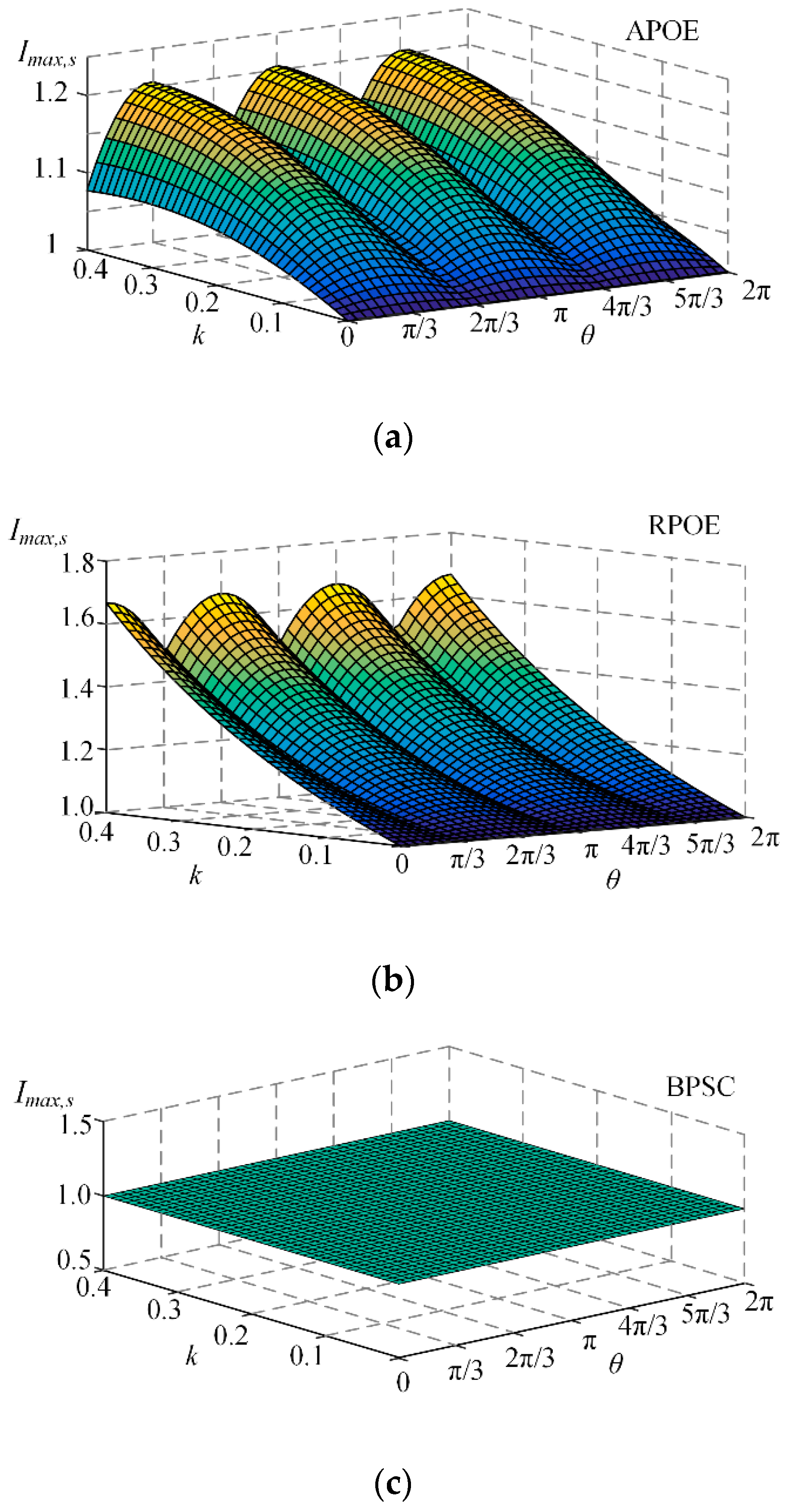
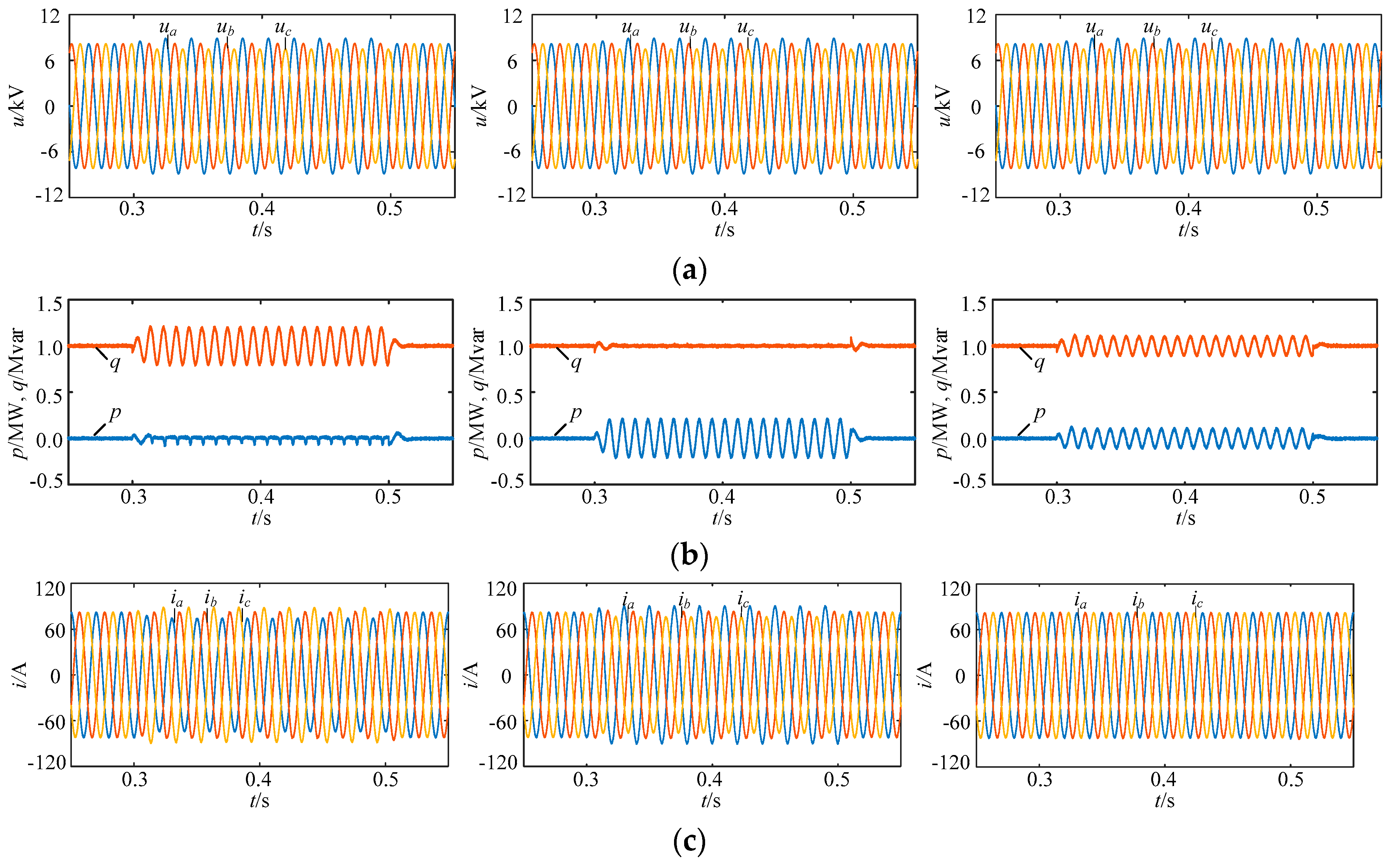
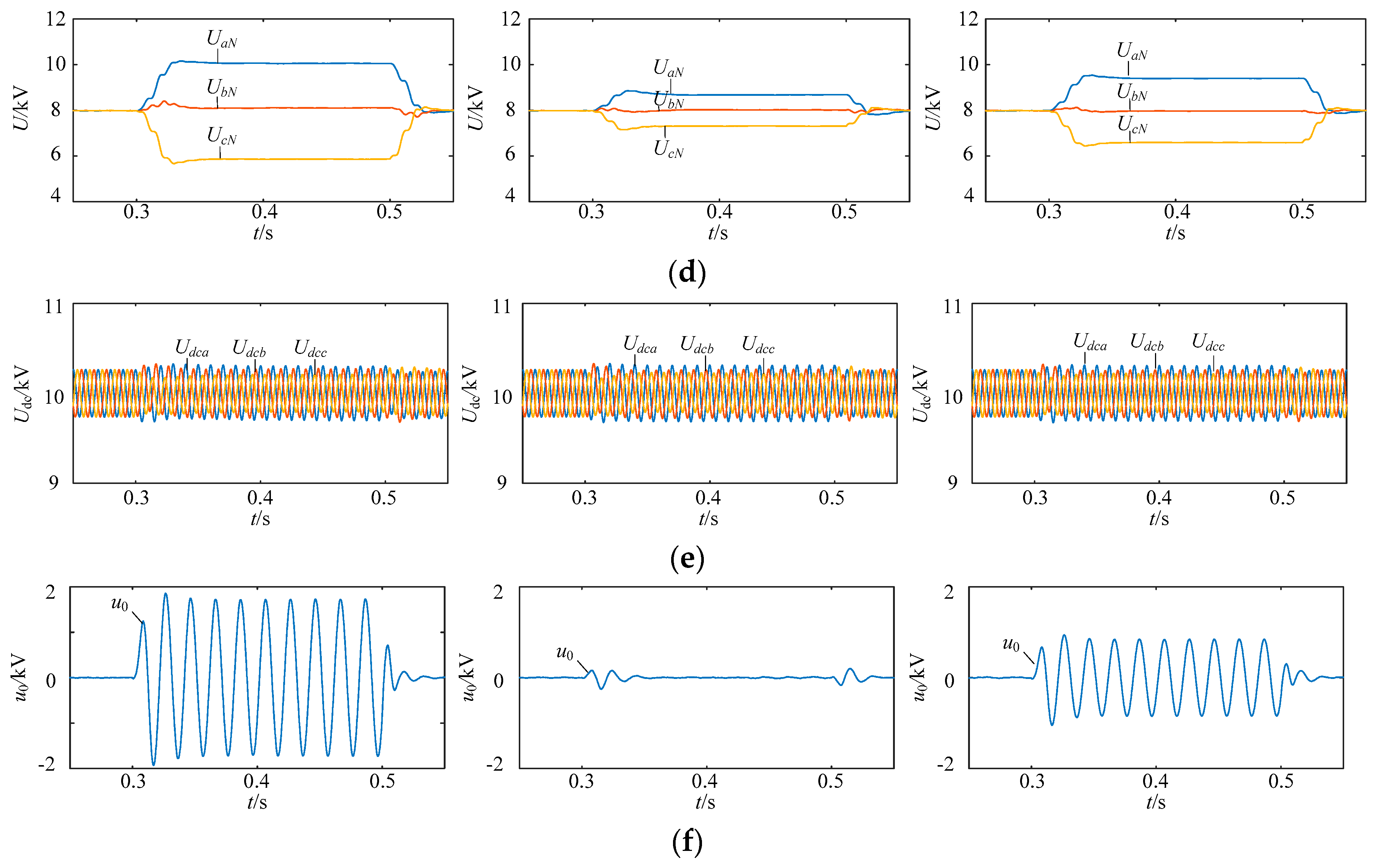
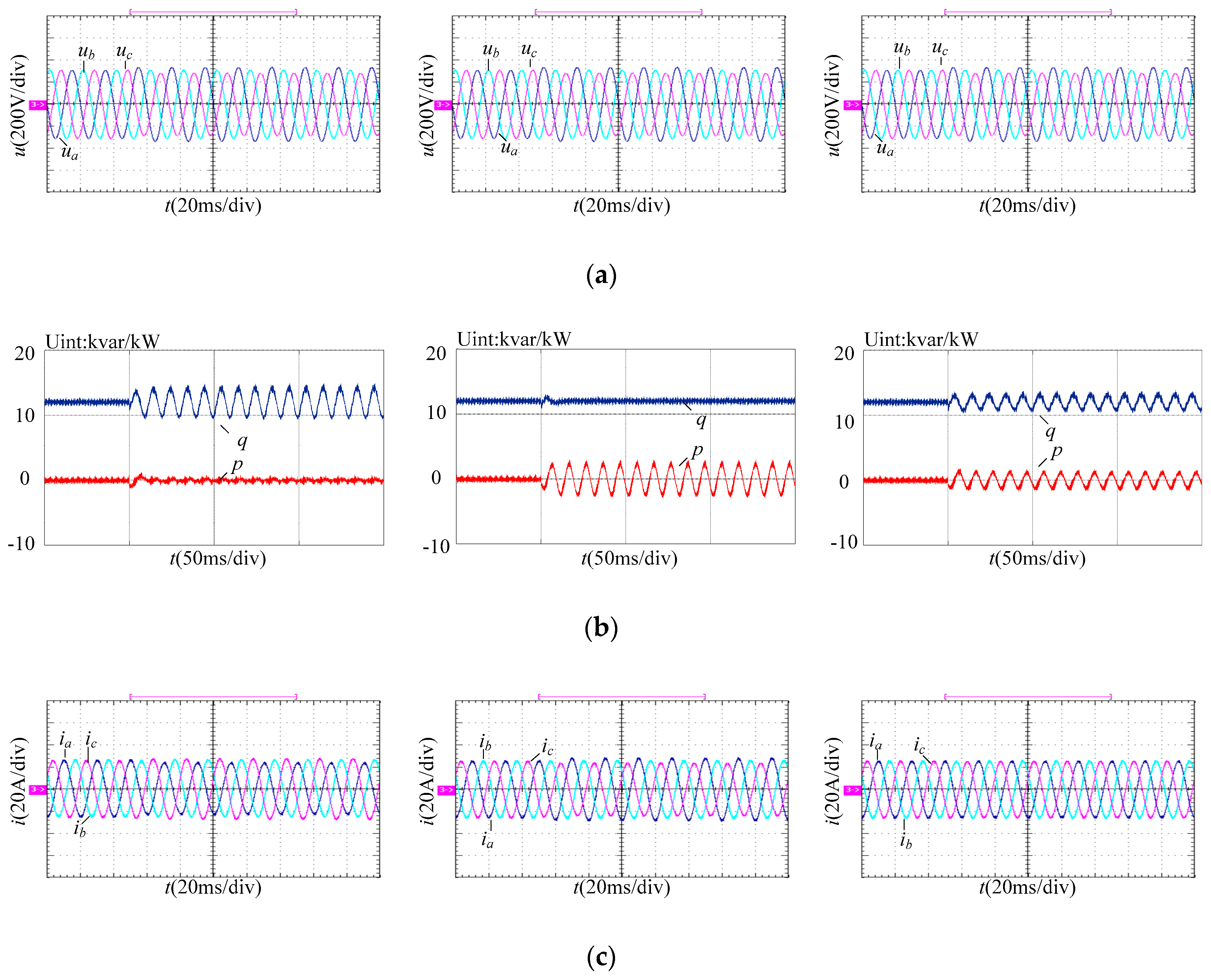
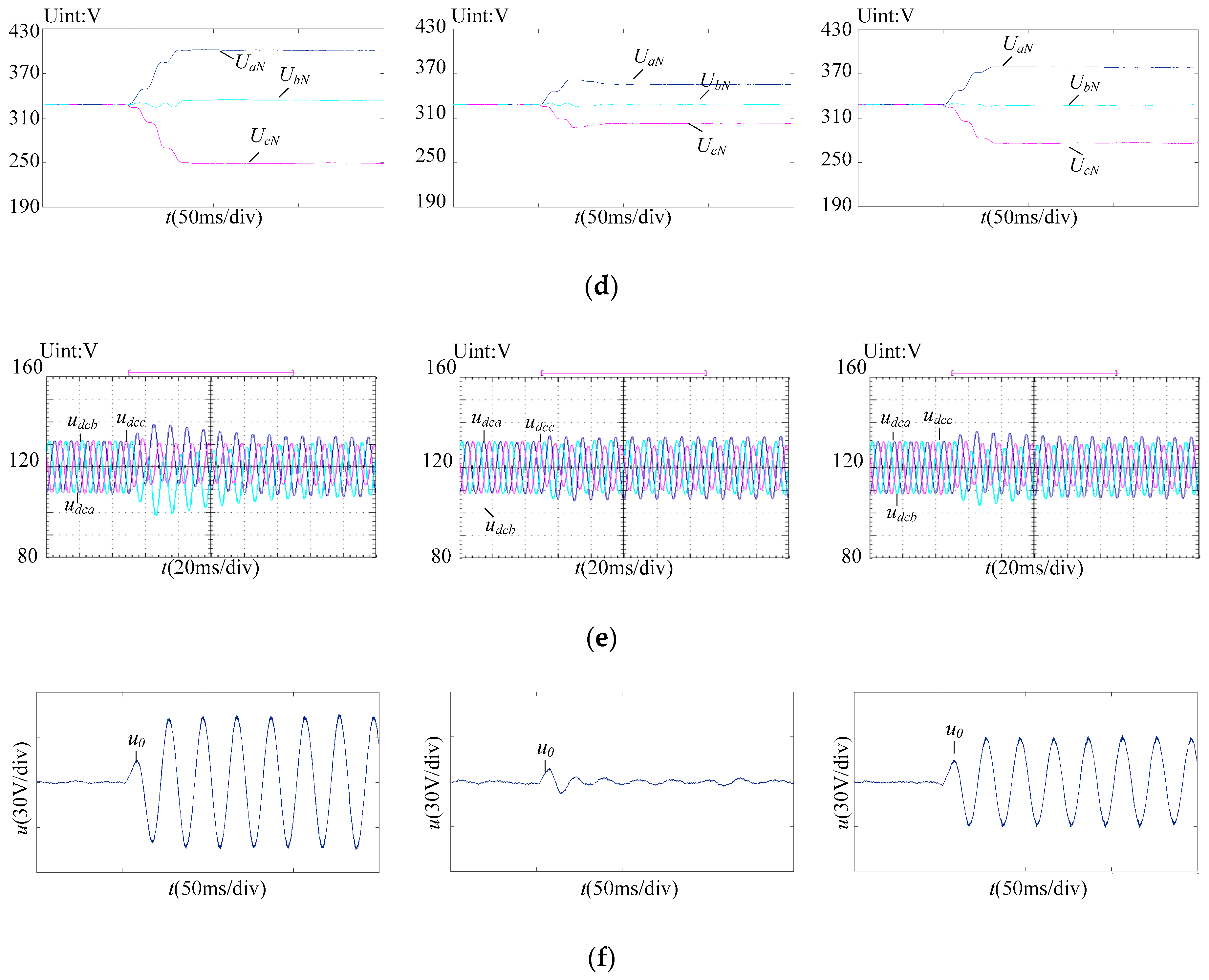
| Parameter | Simulation | Experiment |
|---|---|---|
| The grid line voltage/V | 10k | 380 |
| DC voltage/V | 10k | 480 |
| Cascaded number | 10 | 4 |
| AC filter inductor/mH | 8 | 1 |
| DC capacitor/uF | 2200 | 1100 |
| Carrier frequency/kHz | 2 | 8 |
| Items | APOE | RPOE | BPSC | |||
|---|---|---|---|---|---|---|
| Analytical | Simulation | Analytical | Simulation | Analytical | Simulation | |
| Maximum current | 88 A | 87 A | 90 A | 90 A | 82 A | 82 A |
| Maximum voltage | 10.01 kV | 10.06 kV | 8.69 kV | 8.67 kV | 9.37 kV | 9.40 kV |
| Zero-sequence voltage | 1.66 kV | 1.72 kV | 0 | 0.02 kV | 0.82 kV | 0.85 kV |
| Items | APOE | RPOE | BPSC |
|---|---|---|---|
| Active power | No oscillation | Oscillation | Oscillation |
| Reactive power | Oscillation | No oscillation | Oscillation |
| Phase current Zero-sequence voltage | Unbalanced 58 V | Unbalanced 0 V | Balanced 29 V |
| Maximum voltage | 401 V | 355 V | 376 V |
| Maximum current | 28.5 A | 29.2 A | 25.7 A |
© 2019 by the authors. Licensee MDPI, Basel, Switzerland. This article is an open access article distributed under the terms and conditions of the Creative Commons Attribution (CC BY) license (http://creativecommons.org/licenses/by/4.0/).
Share and Cite
Xiao, M.; Wang, F.; He, Z.; Ouyang, H.; Hao, R.; Xu, Q. Power Control and Fault Ride-Through Capability Analysis of Cascaded Star-Connected SVG under Asymmetrical Voltage Conditions. Energies 2019, 12, 2361. https://doi.org/10.3390/en12122361
Xiao M, Wang F, He Z, Ouyang H, Hao R, Xu Q. Power Control and Fault Ride-Through Capability Analysis of Cascaded Star-Connected SVG under Asymmetrical Voltage Conditions. Energies. 2019; 12(12):2361. https://doi.org/10.3390/en12122361
Chicago/Turabian StyleXiao, Muxuan, Feng Wang, Zhixing He, Honglin Ouyang, Renyifan Hao, and Qianming Xu. 2019. "Power Control and Fault Ride-Through Capability Analysis of Cascaded Star-Connected SVG under Asymmetrical Voltage Conditions" Energies 12, no. 12: 2361. https://doi.org/10.3390/en12122361





